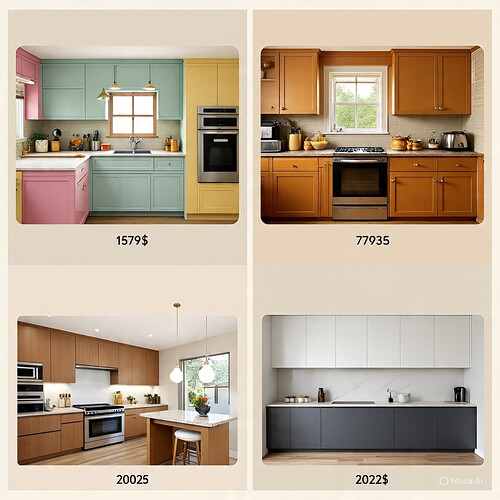The kitchen has always been the heart of the home, but the way it looks and functions has changed dramatically over time. Each decade tells a story—not just about design trends, but about how families lived, worked, and connected with one another. From simple cooking spaces to today’s open-concept hubs, the evolution of kitchen design shows how our lifestyles have shaped the spaces we cherish most.
In the early 20th century, kitchens were purely functional. They were tucked away, used only for preparing meals, and often separated from the main living areas. Functionality mattered more than aesthetics, and the design was straightforward—wooden cabinets, basic stoves, and very little decoration. It was a private, almost hidden space.
By the 1950s, kitchens began to change. This was the post-war era, when families started spending more time at home. Bright colors, patterned linoleum floors, and shiny new appliances became popular. The kitchen became a place not just for cooking, but also for family interaction. It reflected optimism, with pastel tones and cheerful designs symbolizing a fresh start.
The 1970s brought boldness and experimentation. Earthy tones, wood paneling, and open shelving defined the decade. Kitchens felt warmer, more lived-in, and often more cluttered. This era reflected a shift toward informality and self-expression. It wasn’t just about keeping things neat; it was about making the kitchen a true reflection of personal taste.
Fast forward to the 1990s and early 2000s, and the focus turned to efficiency and technology. Built-in microwaves, dishwashers, and more organized storage solutions made life easier. Neutral tones replaced the brighter palettes of earlier decades, and the open-concept trend began to take hold. Kitchens started merging with living spaces, becoming gathering points for family and guests.
Today’s kitchens combine all these influences but elevate them with modern technology and design. Minimalist cabinetry, natural materials, smart appliances, and large islands dominate. The kitchen is no longer hidden away—it’s the centerpiece of the home. It’s where families cook, eat, work, and even entertain guests. Functionality remains important, but so does aesthetics and flexibility.
The evolution of kitchens reflects more than just design choices—it mirrors cultural shifts. As families became busier, kitchens adapted with convenience and technology. As homes became more social, kitchens opened up to living spaces. What started as a purely functional room has now become a lifestyle space, central to daily living.
Looking back, it’s fascinating to see how each decade left its mark. From cheerful colors to modern minimalism, every kitchen tells a story of its time. And as our lives continue to evolve, so will the kitchens that bring us together
